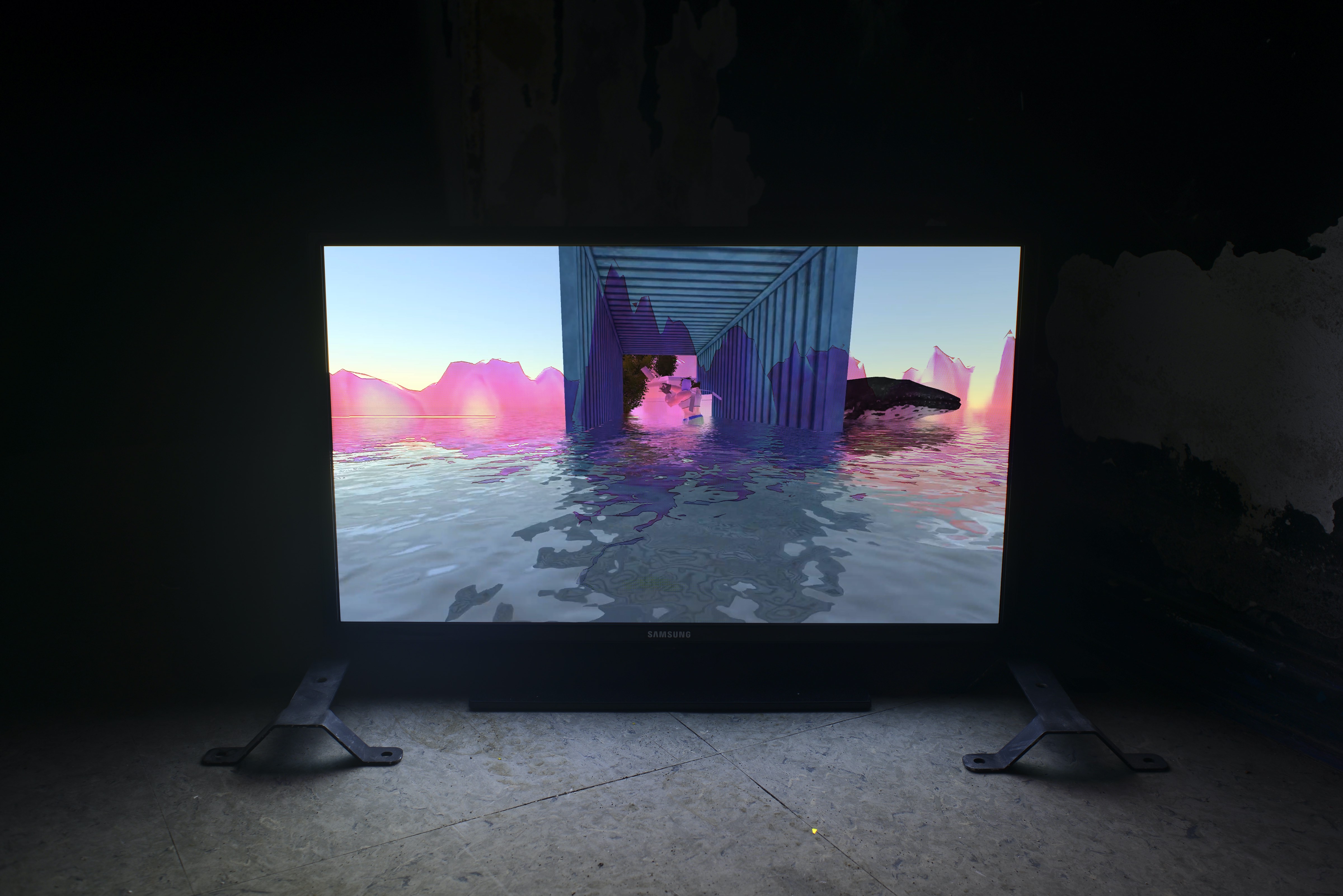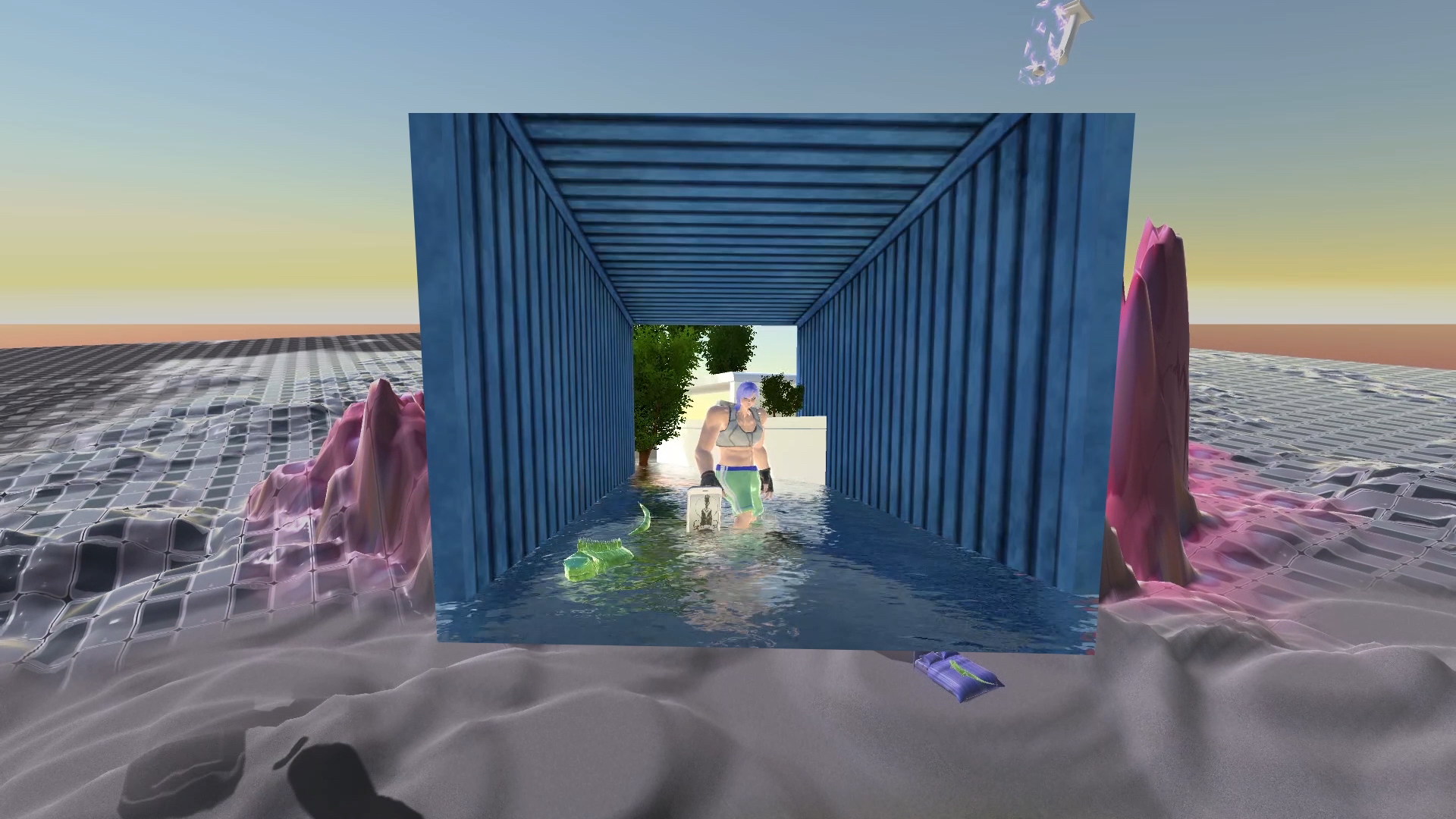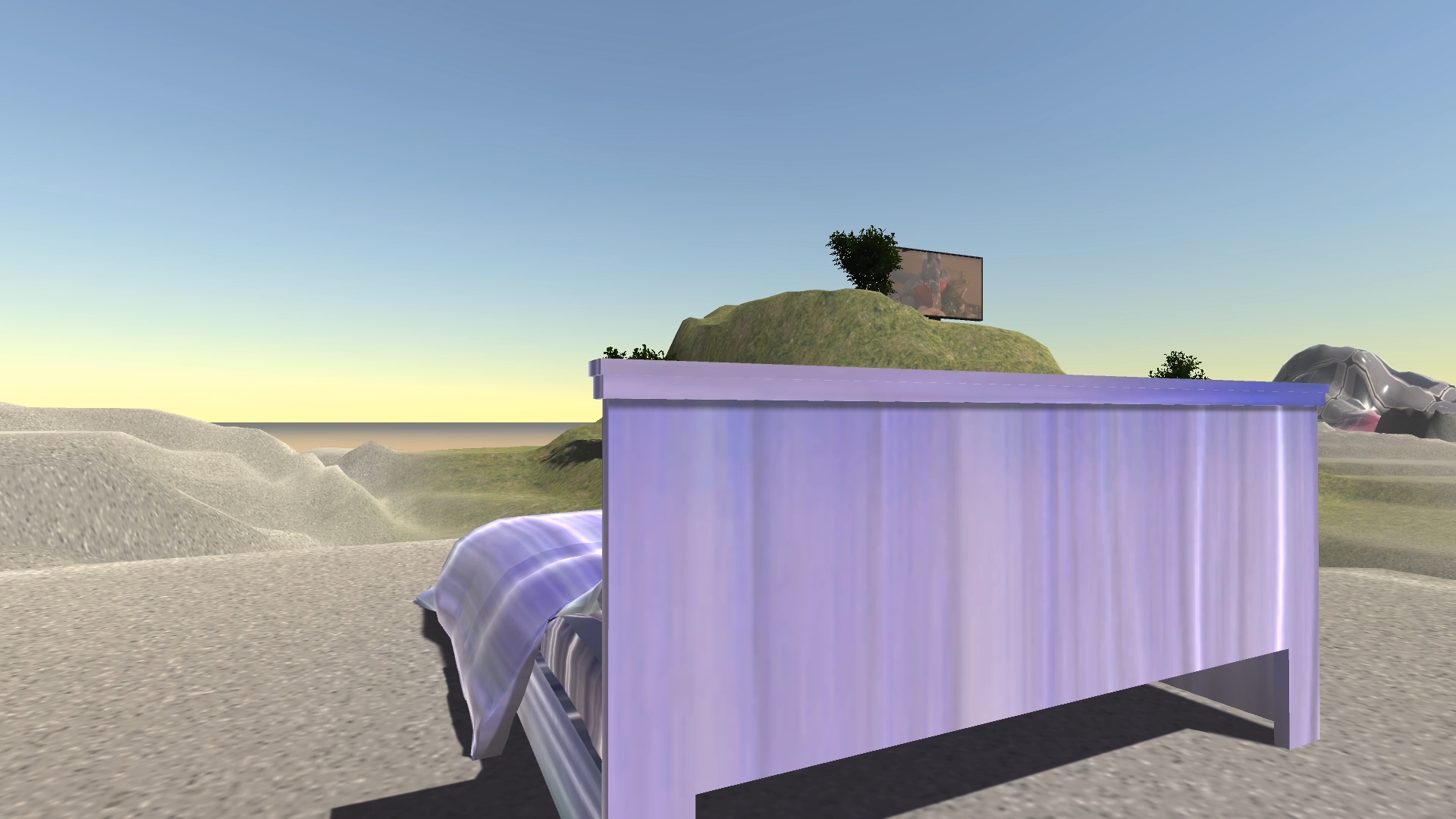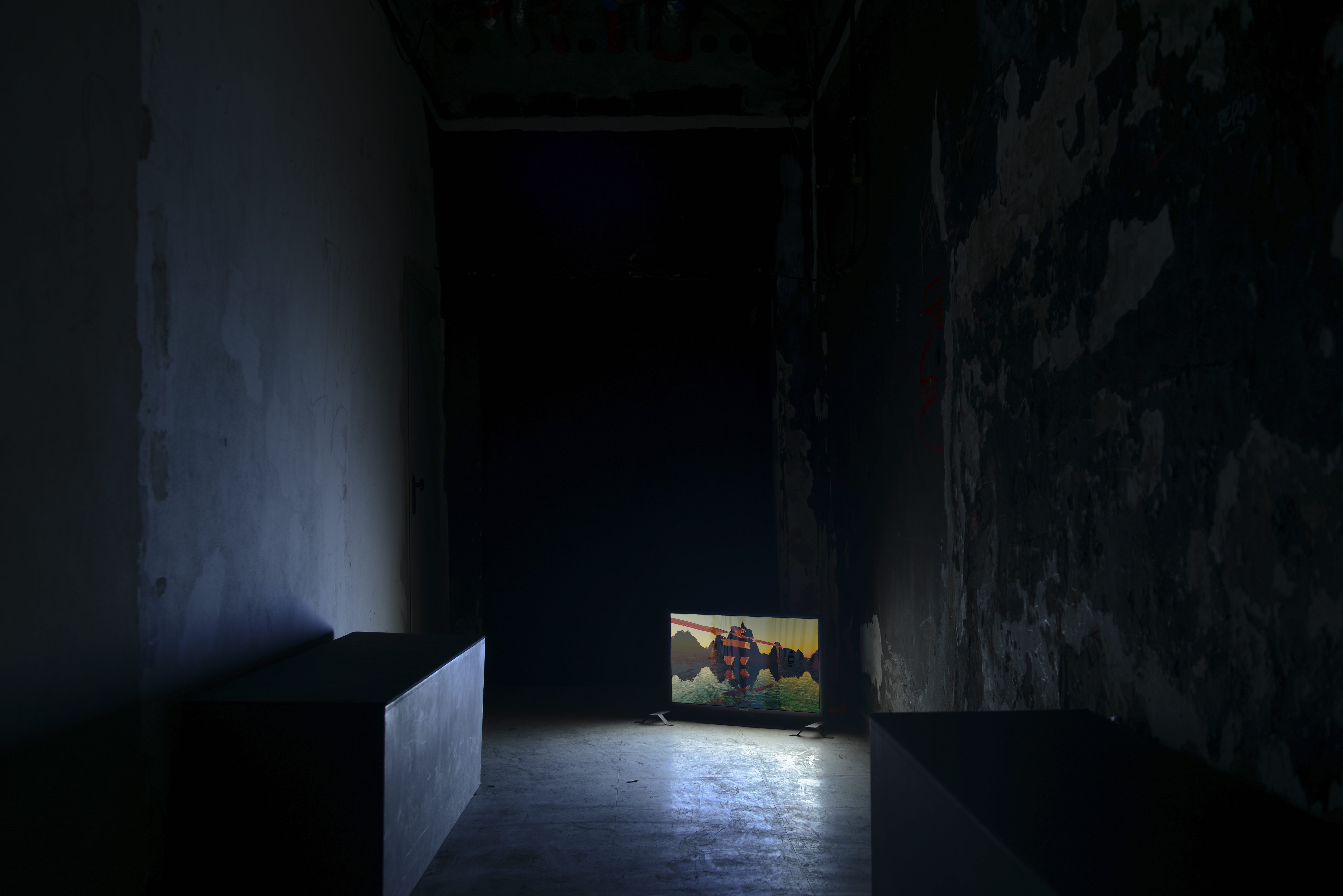MountGrove Modulation, 2018
︎︎︎
collaboration Ashkan Sepahvand
Samsung monitor, mount handles, black box foam seats

MountGrove is a quantum, intra-psychic environment where post-worked and post-embodied imaginaries conflate as an atmospheric and affecting render. Our techno-devices are hollow, their presence ethereal, and their relevance amusing, ironic, or uplifting; literally, we are lifted up by them. Softly floating surveillance is our new ego-block. Water rises and poses no threat to our newfound hollow immortality.
Excerpts from writings When the body seems destined to experimentation and Everything I know about technocapitalism, I learned at Berghain by Ashkan Sepahvand are vocalized into and as MountGrove. A distorted narration conjured by his human voice saturates a landscape described by interspecial / intersexual / interobjective networks.
The work was originally installed in an exhibition co-curated by Zander Porter and Thomas Butler, featuring Billy Bultheel / Adam Fearon / Max Göran / marum / Doireann O’Malley / Eoghan Ryan / Jacolby Satterwhite / sstmrt.com, with support from ROOM E-10 27, XenoEntities Network, & Agora. The work has been further installed for online and offline exhibitions at Vanderbilt University (Nashville), Casino Notabile (Rabat), Porsche SCOPES + Julia Schoschek Collection (Berlin), and others.
“The imaginary virtual landscape of Mountgrove Modulation acts as a sort of reservoir for the affect of pleasure, be it carnal, or aesthetic, all filtered through the caricaturization of the digital; at once highlighting the distance embedded within the post-human sensorium, between the affect of pleasure and the distorted and hyper-rendered, through the exaggerated hedonism of digital space, and the melancholy embedded within the paradox of this experience. While Alien Intimacy probed the nature of the ‘distance between the physical self and digital or alien other’ by manifesting physical bodies in digital spaces, and digital bodies in physical ones, Mountgrove Modulation does so more subtly, by demonstrating the distance between the various digital simulacra of pleasure and the corporeal affect they give rise to. Mountgrove Modulation can be situated within the larger oeuvre of artists probing digital culture and is most reminiscent of the work of fellow post-internet artist Jon Rafman, who similarly investigates concepts of the post-cinematic and the post-human sensorium.”
— Cody Rooney, PhD, contributor to Imagining Futures of Experimental Media
“(A) Dark Room Space is an immersive exhibition-nighttime-event focusing on queer spaces of sociability as potential sites of transformation. In a queer imaginary, the darkroom is a physical site of excess, whether sexual, performative or intoxicating. In contrast, the internet, with its networked nature, can offer myriad ‘off-physical’ counter-sites in the forms of P2P (peer-to-peer connection / file transfer), MMOG (massive multiplayer online game), camsex (Skype, Cam4), anonymous imageboard sites (4chan), and more. Excess immersion, excess subjectivity, and excess cruising have rendered both real and virtual sites of the queer-social intersectional. In major urban centers, condo gentrification effects change around future possibilities of online and offline forms of cruising and the (spontaneous) encounter. In times of excessive subjectivity, opacity in the darkroom offers conceptual respite from the predominant transparency/surveillance paradigm standardized by (cam-)surveillance technologies. Departing from the darkroom as a portmanteau largely significative of the gay male sex site, a dark room space may offer alternative utopics of identity-obfuscation where the social is not as readily determined by the ocularcentrism of sex. Appropriating tactics of dark room immersion as a point of interest for the genre of the art event, we wonder how a collection of works which engage with the body in social, sexual, sonic, corporate, public/private, and online/virtual situations can raise questions around digital and affective intersections of the phenomenological. In other words, allow us to imagine a temporary space-time in which a collective queer body may be constituted from iterations and combinations of digital and physical tethers.”
— Thomas Butler & Zander Porter








»Desktop
